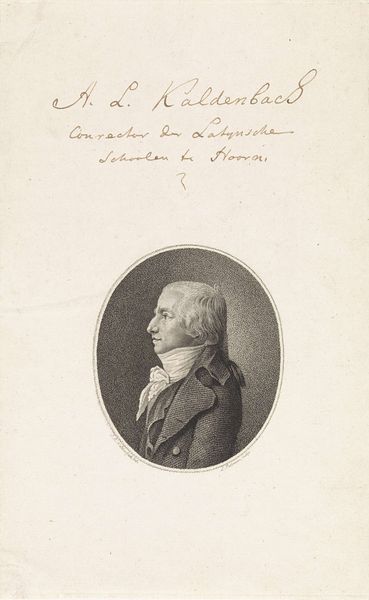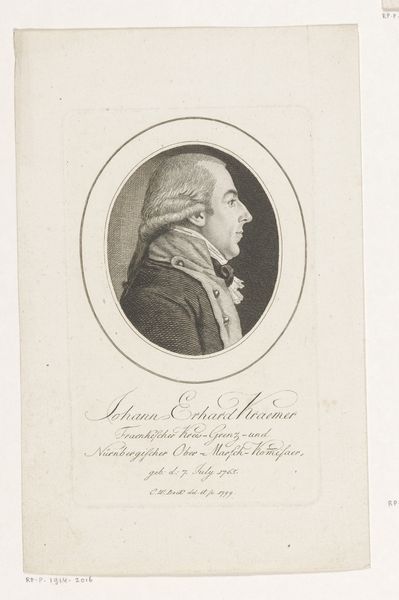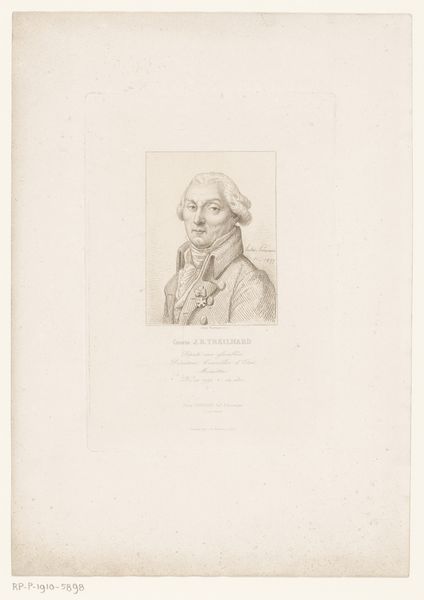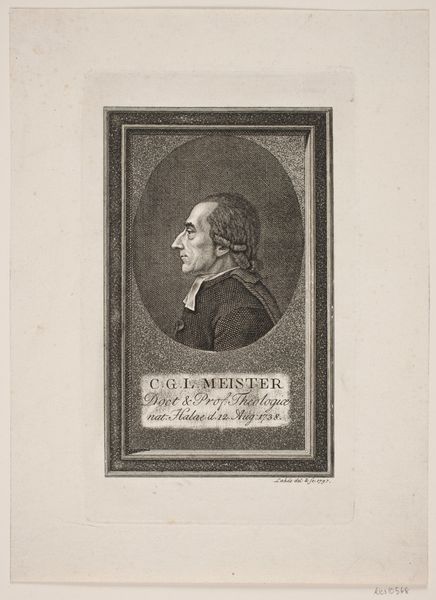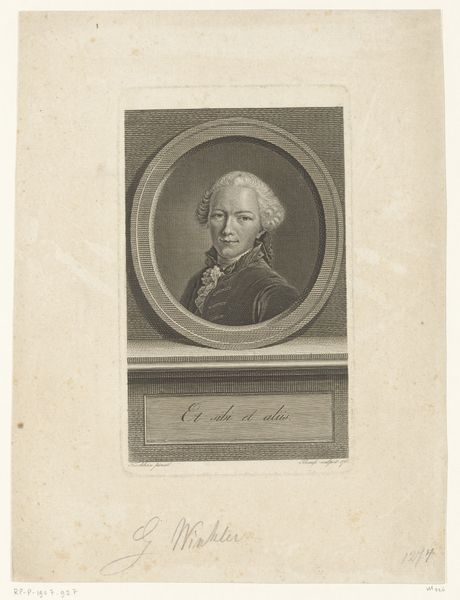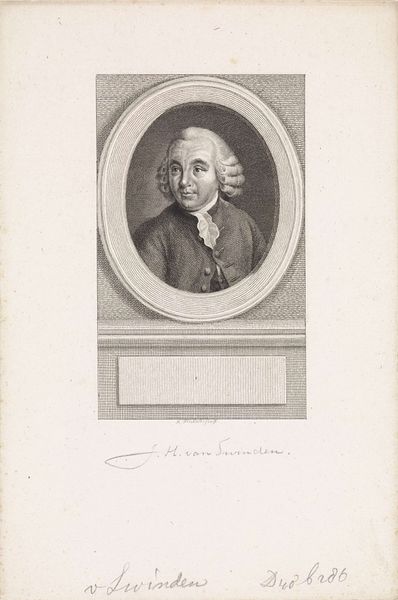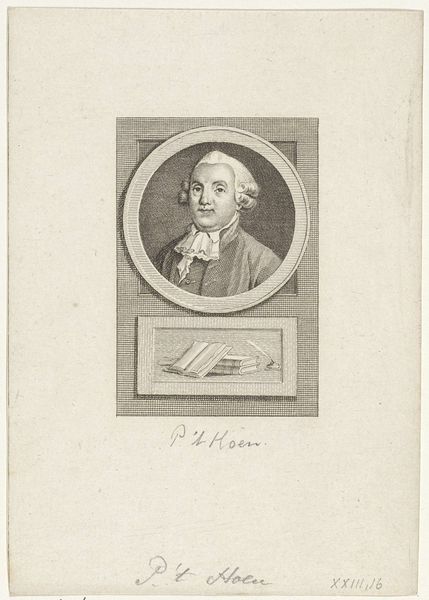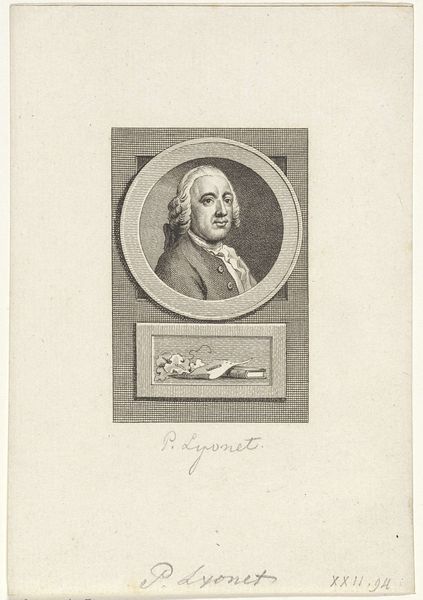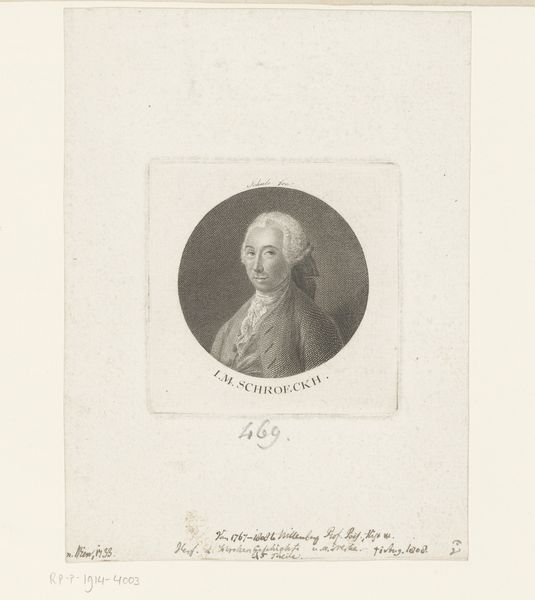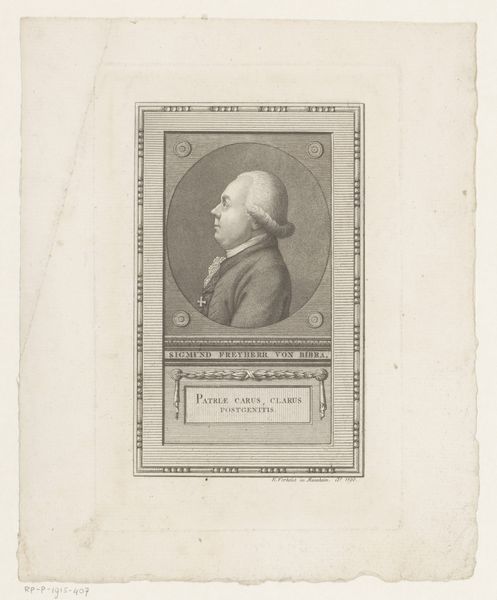
engraving
#
portrait
#
neoclacissism
#
figuration
#
line
#
engraving
Dimensions: width 164 mm, width 113 mm
Copyright: Rijks Museum: Open Domain
Editor: So, here we have a portrait, "Portret van Adolph Werner van Pallandt tot Zuthem," made between 1783 and 1795 by Reinier Vinkeles. It's an engraving, quite formal, and very much of its time. What strikes me is how the subject's gaze seems so controlled, almost like he's performing a role. What do you see in it? Curator: You've picked up on something crucial – the performance of identity. This engraving exists within the framework of Neoclassicism, a style consciously emulating the art of ancient Greece and Rome. What was Neoclassicism but a method of control of revolution? The question becomes: How did the rising bourgeoisie of the 18th century utilize this visual language to establish and legitimize their social position, to mirror the power of empires past? The very act of commissioning and circulating such a portrait was a statement about their belonging to an elite. How does this relate to power structures? Editor: That's fascinating. So, it's not just a portrait of a man, but a statement about class and power? But it seems a little… muted, to express such grand themes. Curator: Exactly! Consider the context: the rise of Enlightenment ideals alongside rigid social hierarchies. This 'muted' tone reflects the bourgeoisie’s desire to assert dominance while maintaining social decorum. This relates directly to modern class structures. Editor: So the restraint in the engraving is itself a kind of language, a tool of class expression? Curator: Precisely. And this links to contemporary discussions on the performance of identity. How do we choose to represent ourselves in a world that’s constantly judging? This connects the historical portrait to our understanding of ourselves, in the digital and the real world. Editor: I hadn’t thought about it that way, as a constructed image making a powerful social claim. Thanks for the fresh eyes! Curator: Absolutely. It is about examining artworks not just as isolated objects, but as documents reflecting their era’s complex power relations, influencing the structures of society around us today.
Comments
No comments
Be the first to comment and join the conversation on the ultimate creative platform.
